
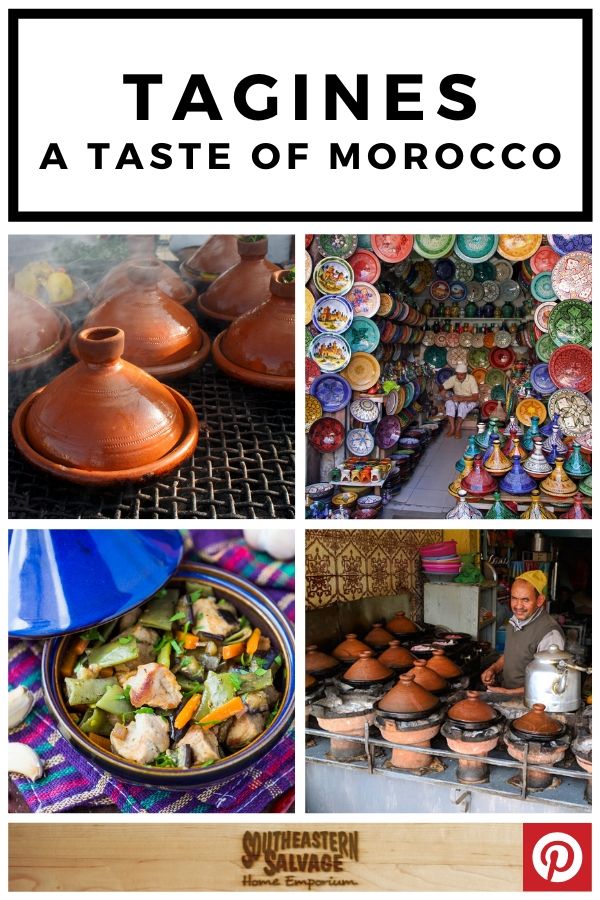
On a recent trip to Morocco, our buyers discovered Tagines, a North African stew of spiced meat and vegetables slow cooked in a shallow earthenware dish with a tall, cone-shaped lid. The word Tagine is not only the name of the food, but also the name of the cooking vessel. Tagines are as old a tradition as the ancient walled city of Marrakech and actually date back to the Stone Age. They are synonymous with Morocco and, quite frankly, a matter of national pride. But what would you expect from a city so rich in history.

In Marrakech, our buyers easily lost themselves in the twisting alleyways of the medina where the marketplace, known as the souks, is brimming with chaotic noise, bright colors, and fragrant aromas.
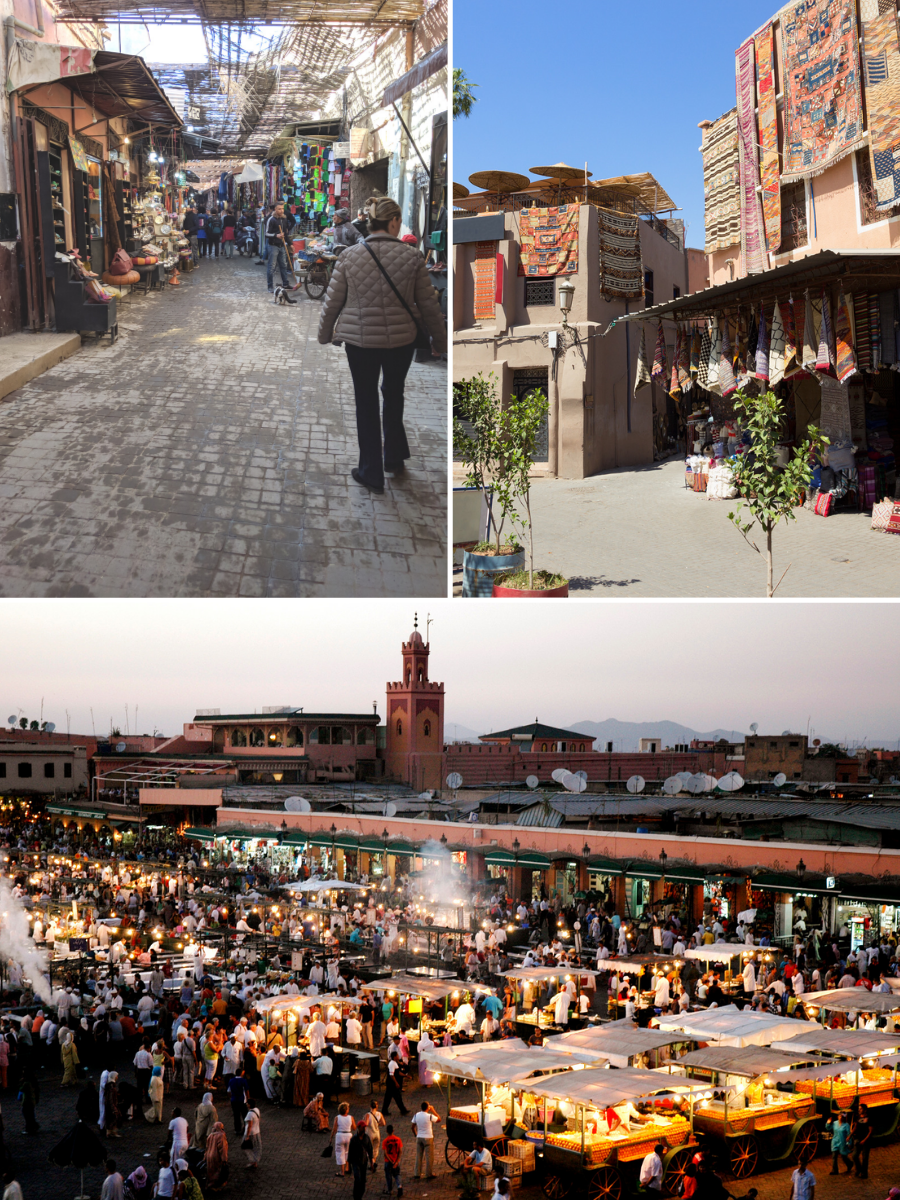
Amidst the camels, charmed snakes, and street performers, are shop after shop of colorful wares, handmade by local merchants.
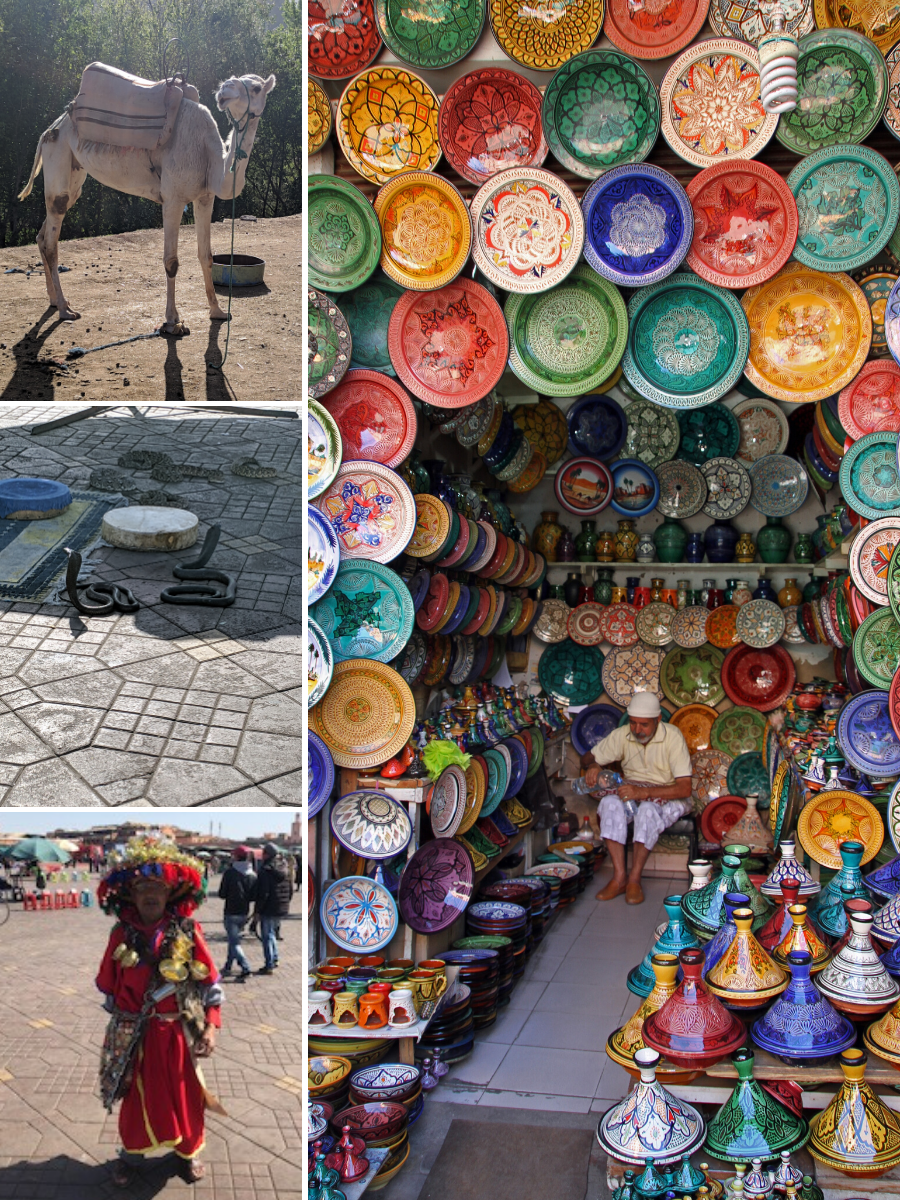
Everything from glassware and hand-painted porcelain, leather and textiles, to apothecaries filled with herbal remedies and heaping pyramids of spices.
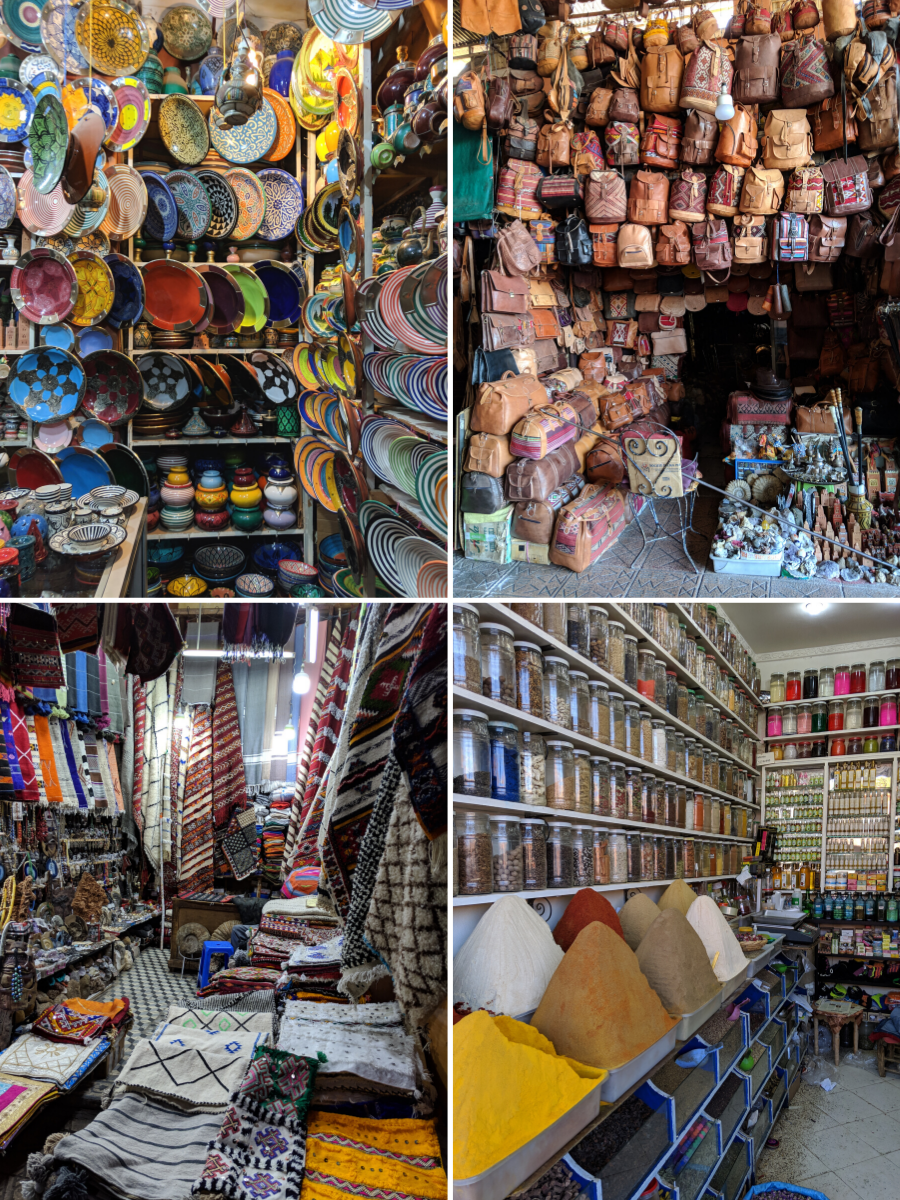
It was hard not to notice nearly every roadside stand, café, and tourist restaurant had Tagines simmering all day long. As our buyers meandered up and down the rows of shops, they couldn’t escape the tempting smells of the Tagines. They found a food stall where the locals gather and had some of the most delicious food they’ve ever eaten. They fell in love with Tagine cooking and knew they had to bring Tagines to our customers.
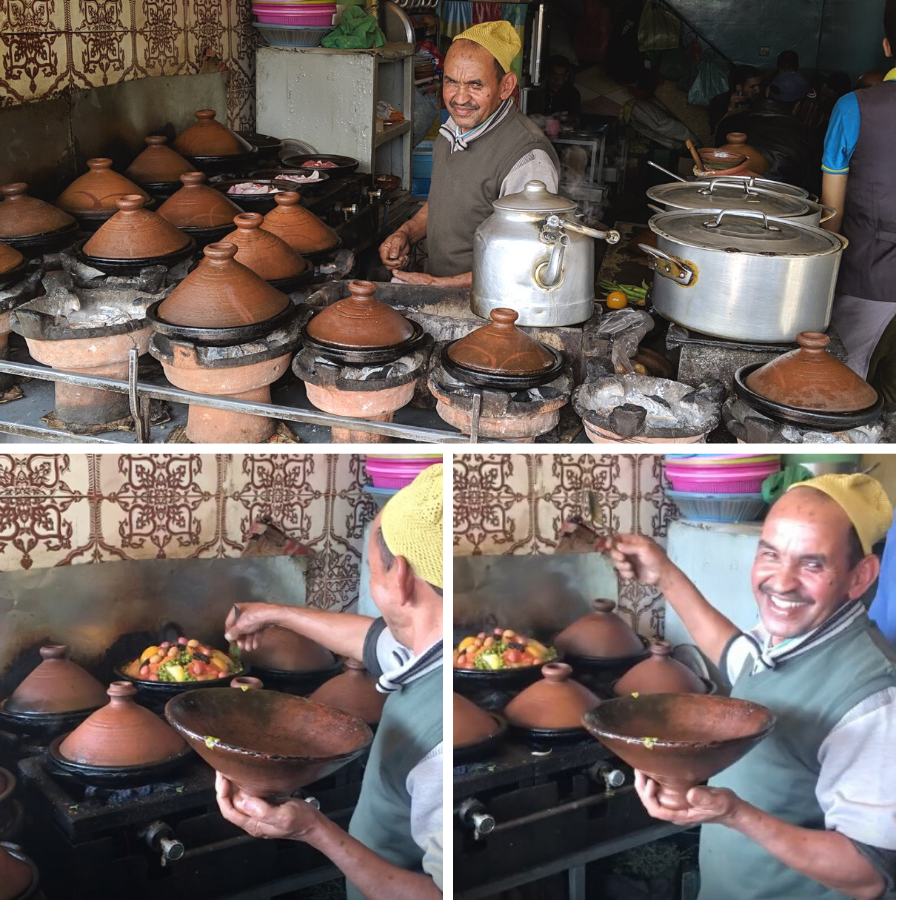
As they left Marrakech with full bellies and many wonderful treasures for our awaiting customers, they started their trek to Fès along the winding roads of the Atlas Mountains. Breathing in the beautiful countryside and fresh air, they were enticed to make a brief stop at a quaint and colorful café where they enjoyed coffee brewed with water from the melting snowcaps of the surrounding mountain range. The perfect end to a perfect day.
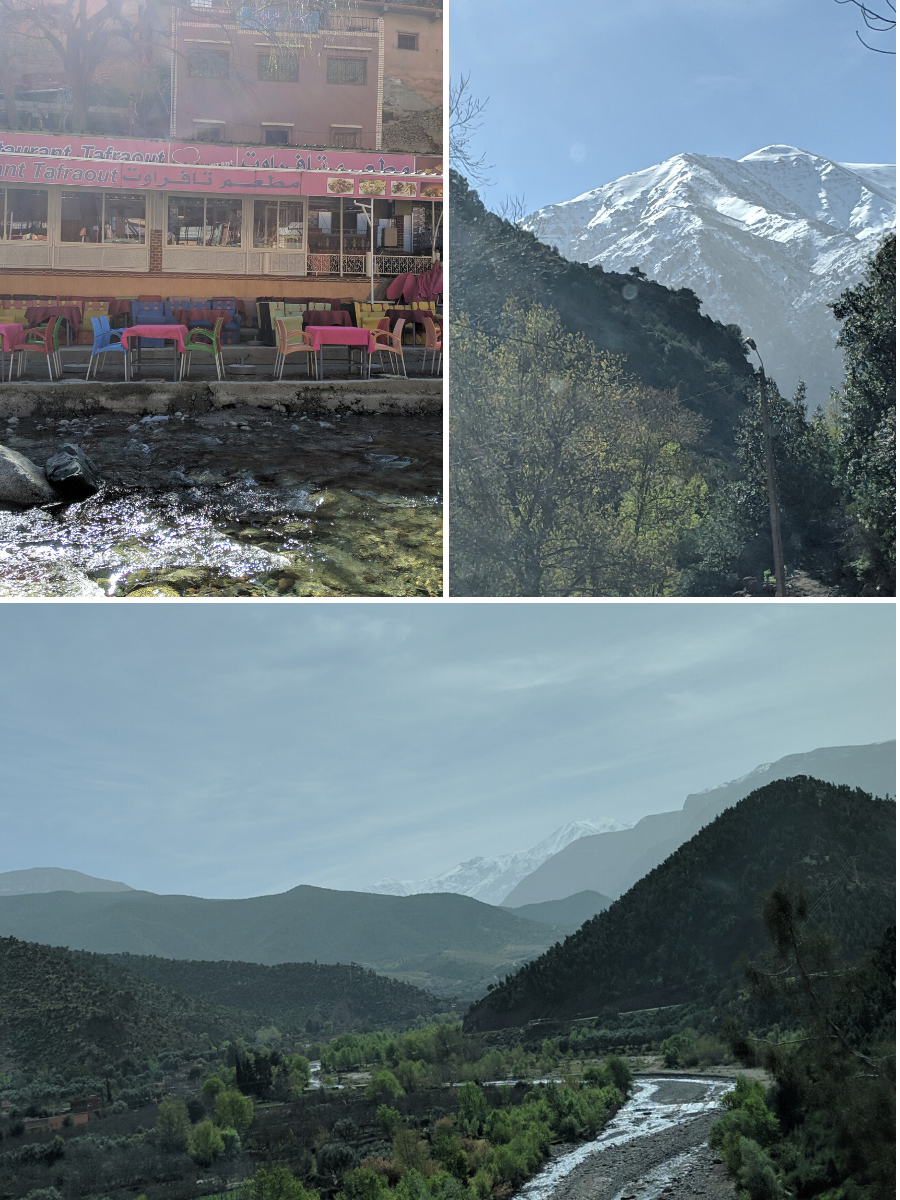
So what exactly is a Tagine and how does it work?
Tagines are made of earthenware or clay and have a thick cone-shaped lid with a round base. Although you can find hand-painted, ornamental Tagines, the basic cooking versions are typically unpainted and often unglazed, like the ones we sell. They are not factory manufactured, but rather made by hand in small shops. Artisans hand turn these functional works of art on pottery wheels, then sun-dry them on the roof of their shops.
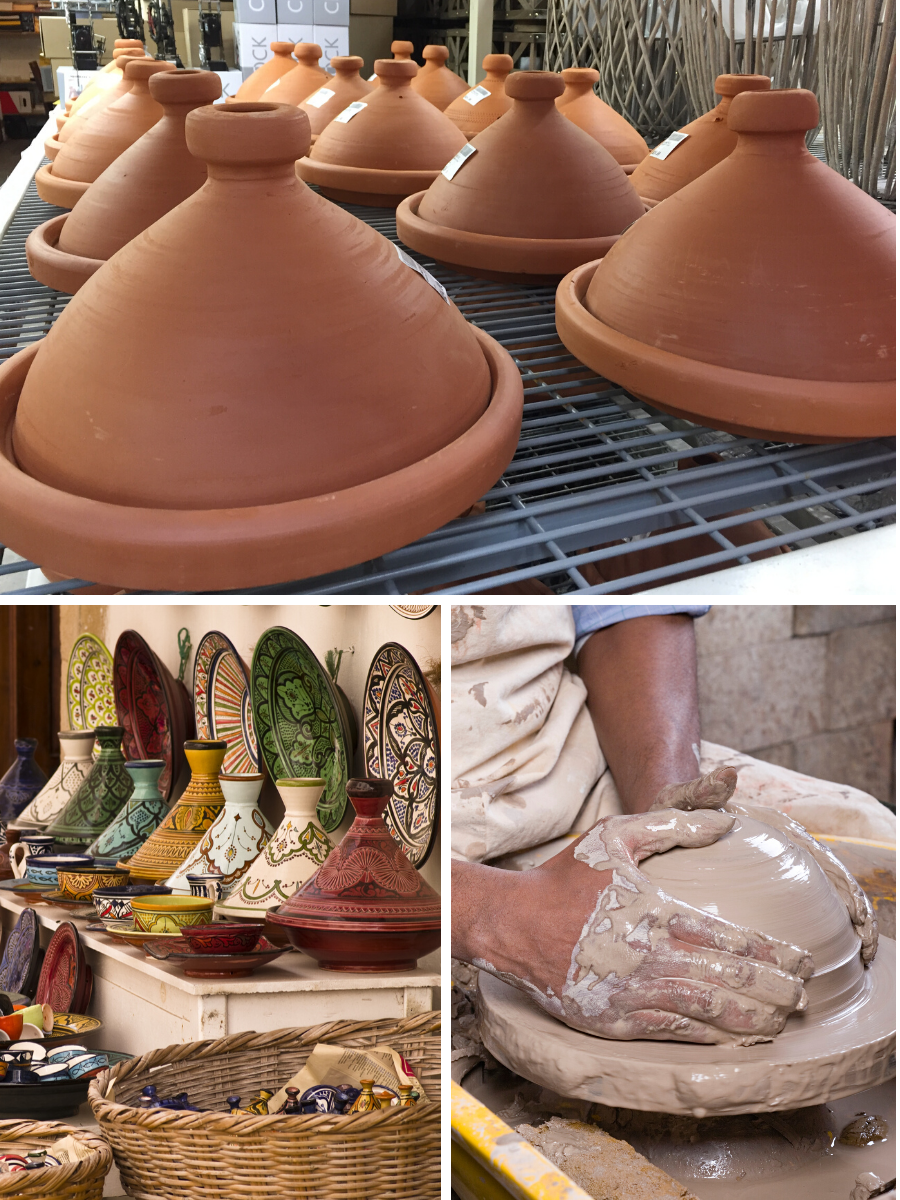
The conical lid of the Tagine sits in the raised outer lip of the shallow base, and as the Tagine heats up, it traps moisture and circulates it back around the food with even steam distribution, much like a crockpot, rice cooker, or pressure cooker works. This slow cooking technique at low temperatures makes meats, vegetables and grains incredibly moist and tender as the flavors mingle and enhance each other. Food cooks with a minimum amount of additional liquid and no additional fat. It’s a simple and healthy way to make an incredibly flavorful meal.
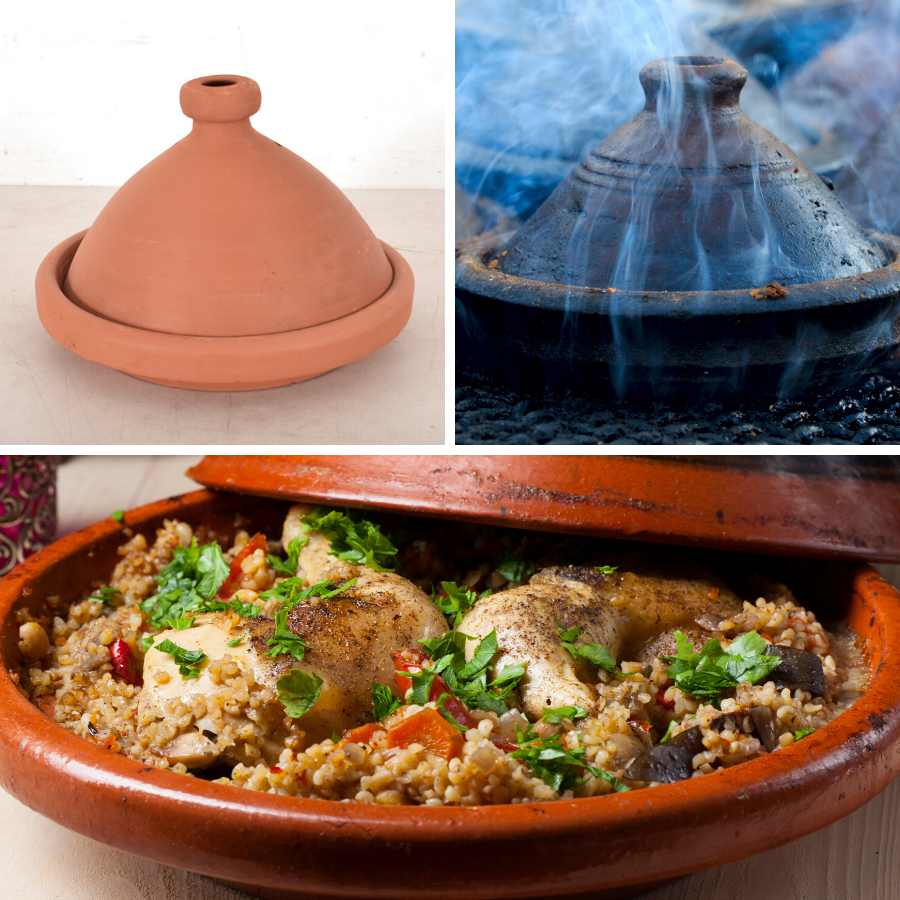
Tagines can be used on gas or electric stoves, in an oven, or on a grill. When using them on stoves, it’s recommended you use a heat diffuser to maintain a consistent heating surface and to protect your burners, especially glass top stoves.
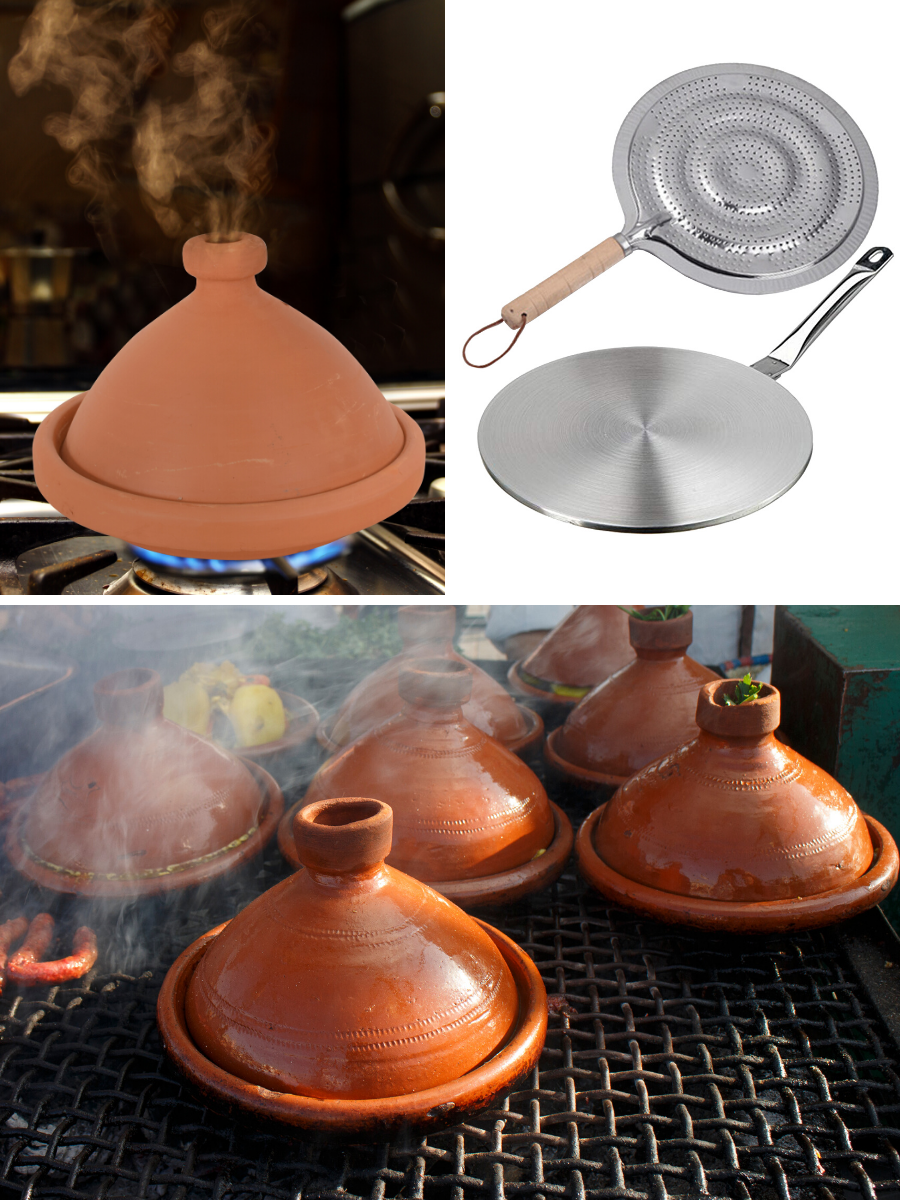
And if you really want to maintain the feel of the Moroccan culture, your Tagine can go directly from the stove top to the table. Make a lasting impression at your next dinner party by cooking and serving your meal in a Tagine. And if your dinner guests are running late, Tagines will keep the food warm while you wait for them to arrive.
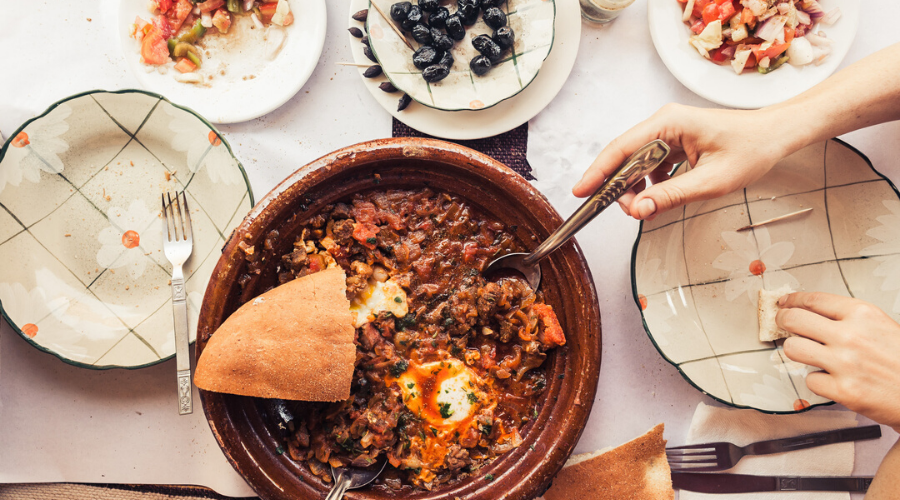
What can I cook in a Tagine?
The basics consist of meat, vegetables and lots of herbs and spices, even dried fruit and grains. You do not have to use traditional Moroccan ingredients to make an exotic meal. When you cook in a Tagine you get the unique earthy flavor you can’t get when you cook in a regular pot or pan. You can put a modern twist on any traditional dish or experiment with your own blend of ingredients. There are lots and lots of great Moroccan cookbooks and recipes online, but you don’t have to cook only Moroccan food in a Tagine. Be creative.
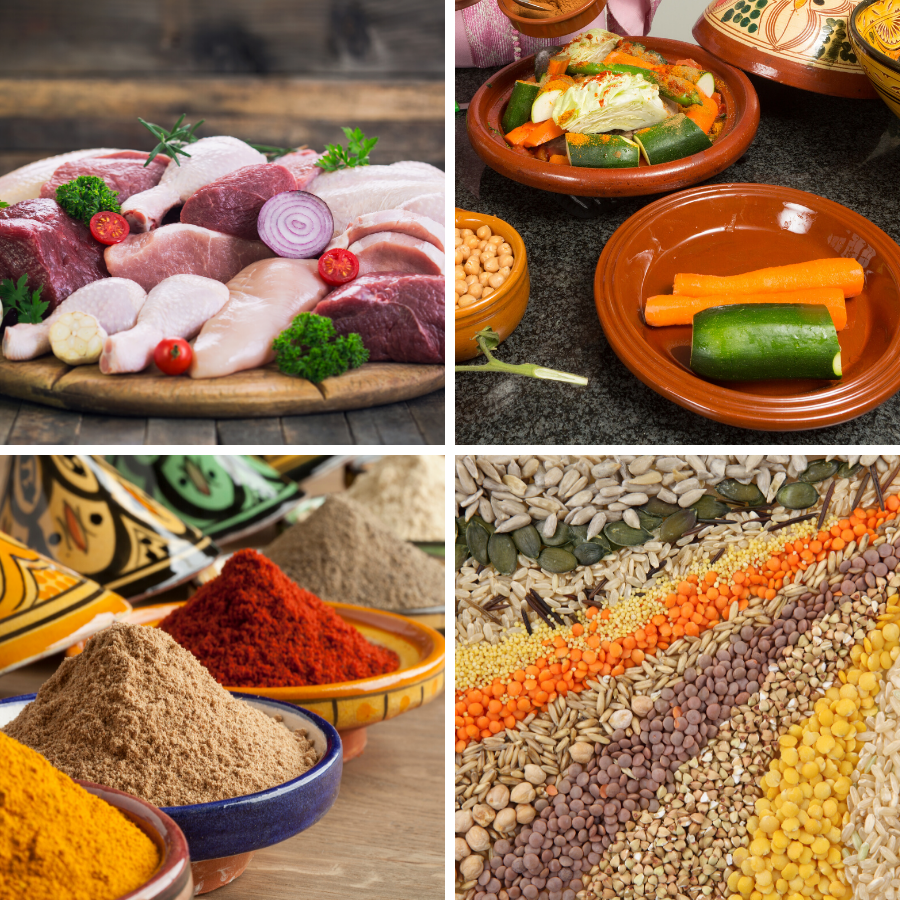
Once the ingredients are piled in the center of the tagine, you begin the slow cooking process. Cooking with a Tagine takes a little patience because high heat will cause a Tagine to crack. Rapid changes in temperature can also cause a Tagine to crack so never add cold food or liquids to a hot Tagine or place a hot Tagine on a cold surface. And the reverse is also true, don’t add hot liquids to a cold Tagine or place a cold Tagine in a preheated oven.
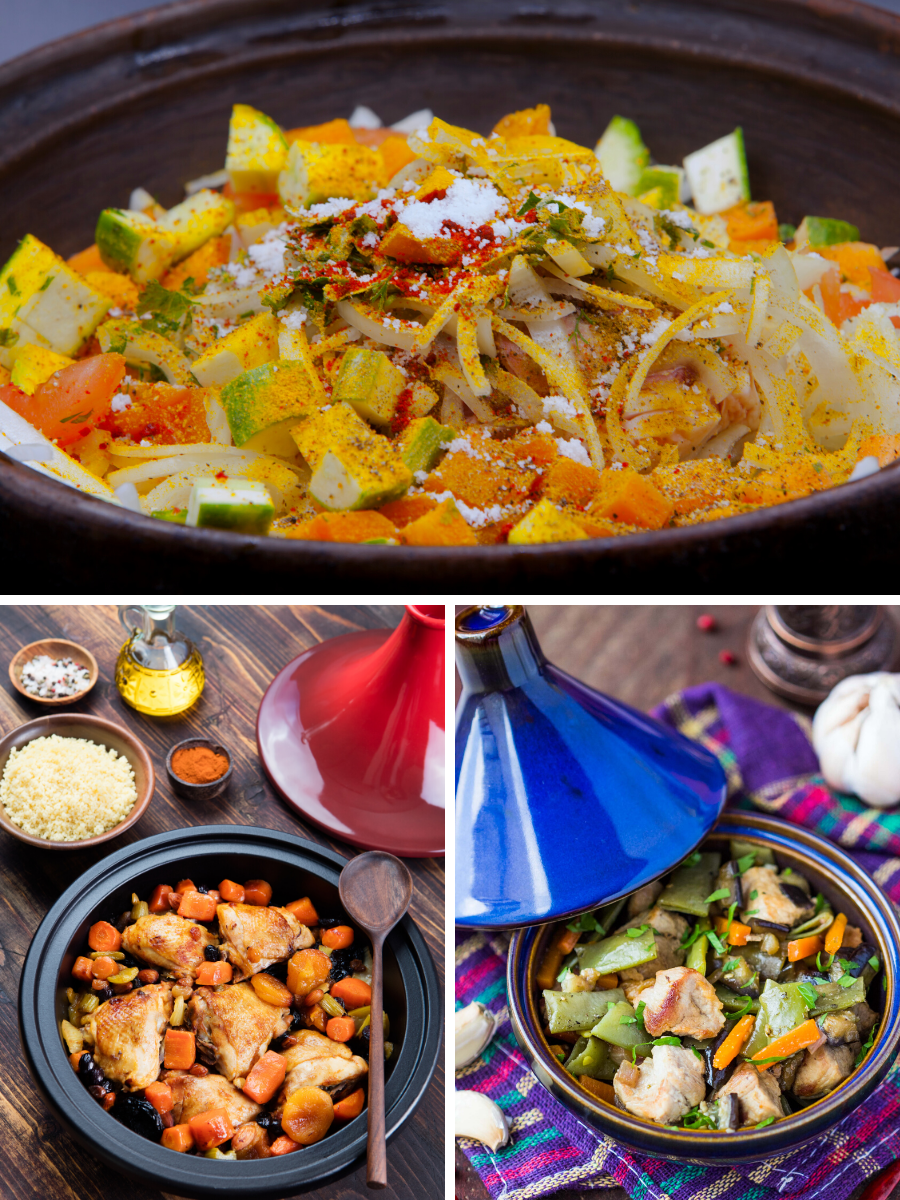
Unglazed clay Tagines have no coating so it is important to stir often and check the bottom of the Tagine regularly to make sure foods are not sticking. It’s best to use a wooden or plastic spoon, not metal, and if the sauce is evaporating too quickly, add a little warm water. Just remember the rule: never add cold liquids to a hot Tagine. There is a fine line between giving the Tagine enough time to build up the steam necessary for slow cooking and preventing the bottom of your pot from burning. With a little practice and patience, you will easily master this fine art of Tagine cooking.
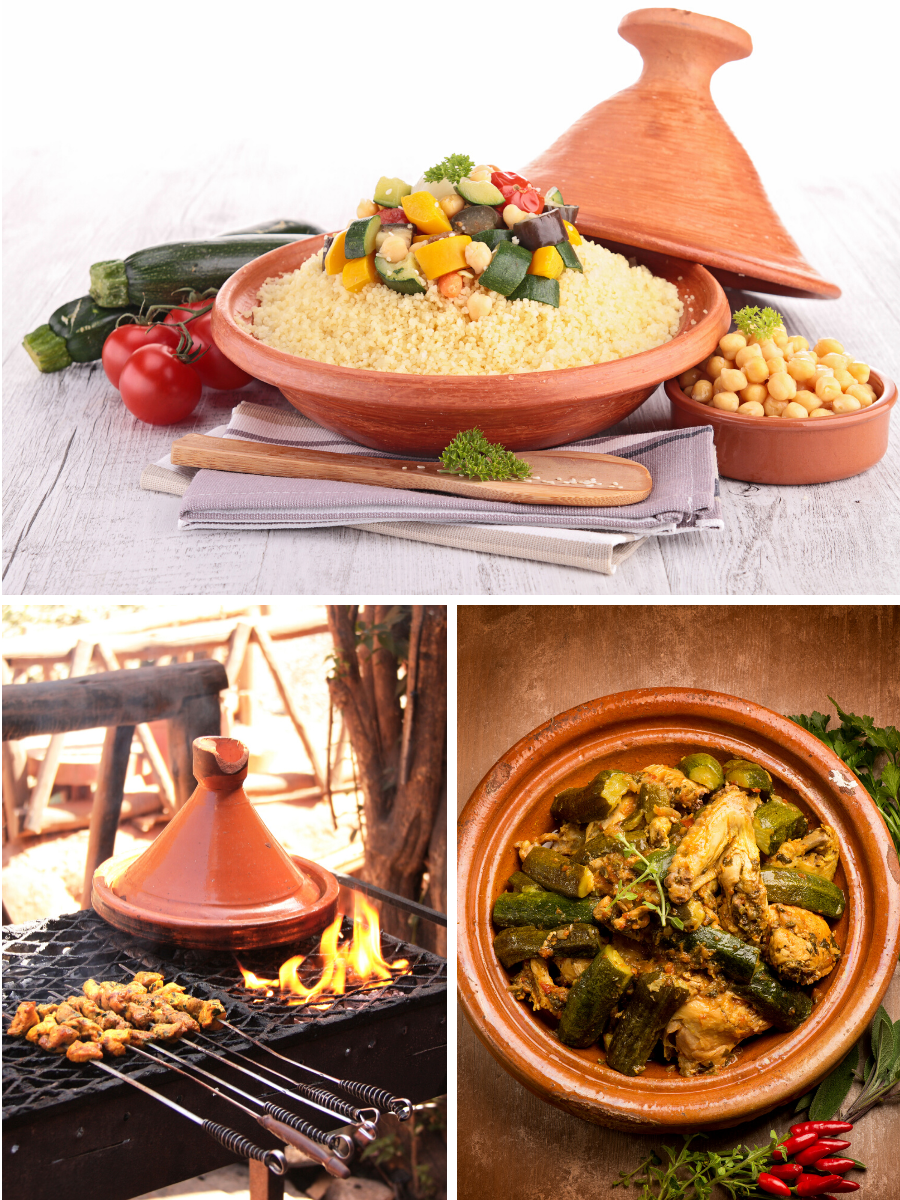
Tagines create wonderful aromatic, flavorful stews and braises. Your meats will cook so tender they fall apart with the slightest touch of a fork, potatoes cook perfectly and without being soggy, even eggs can be steamed alongside meat and vegetables, and will have perfectly set yolks which are still soft. Surprisingly meats brown in the heated clay despite the slow simmer. Slow-cooking meats at low temperatures, effectively braises them until they become tender, which is perfect for tougher cuts of meat as well as beans. And you can poach pears, apples, peaches, or figs in wine or a little bit of juice or nectar for a healthy dessert. Are you hungry yet?
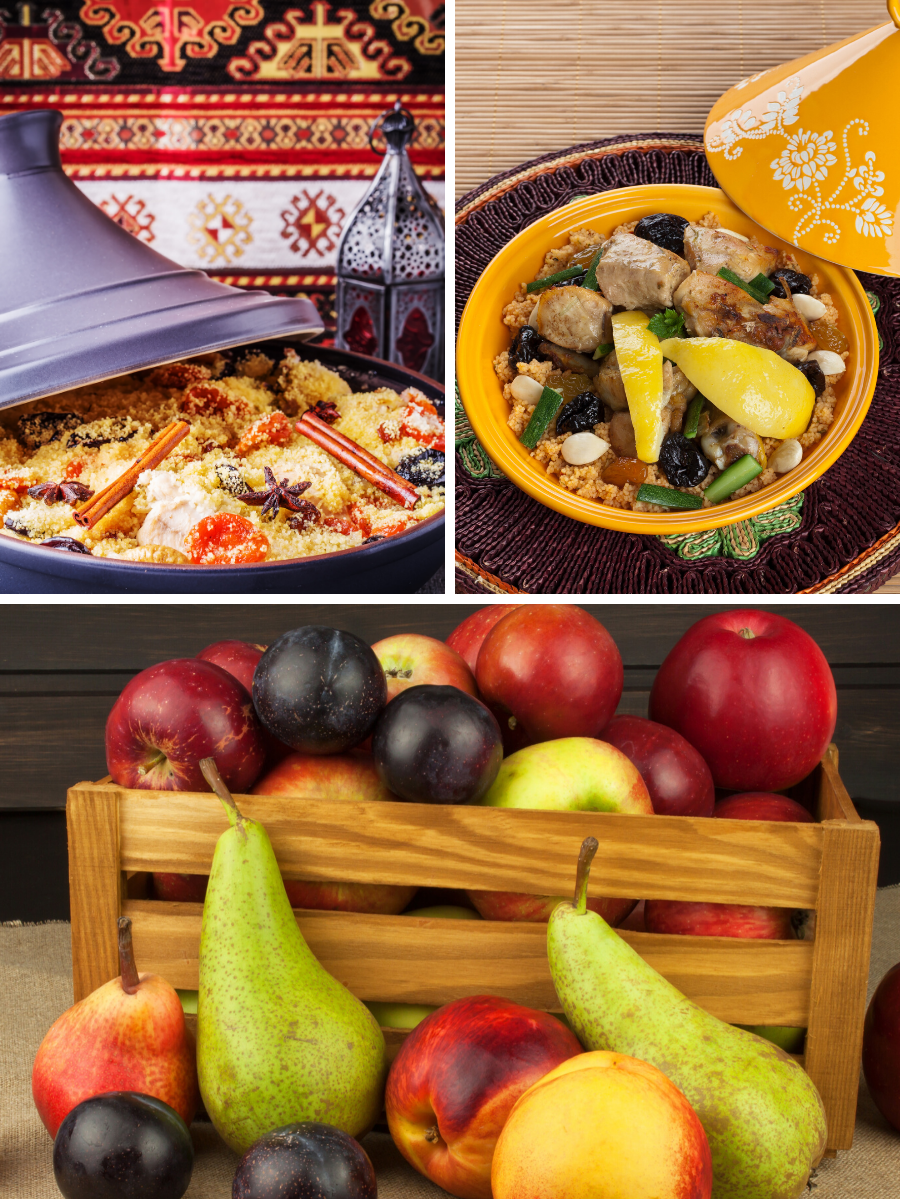
Okay, now I have a Tagine of my own, but how do I take care of it?
Much like cast iron cookware, Tagines gain seasoning the more you cook in them and the seasoning adds a little more flavor to every subsequent dish. Before you use your Tagine for the first time, you will need to cure it. This will seal and strengthen the clay to make it more durable and less susceptible to thermal shock. Step-by-step instructions and video tutorials can be found on the internet, but in a nutshell, the process involves soaking your Tagine in water for several hours or overnight, drying it completely, then rubbing it with a good quality olive oil, and heat setting it in the oven. Olive oil has a dual effect because it is just as important for sealing the clay as it is for flavoring Moroccan cooking.
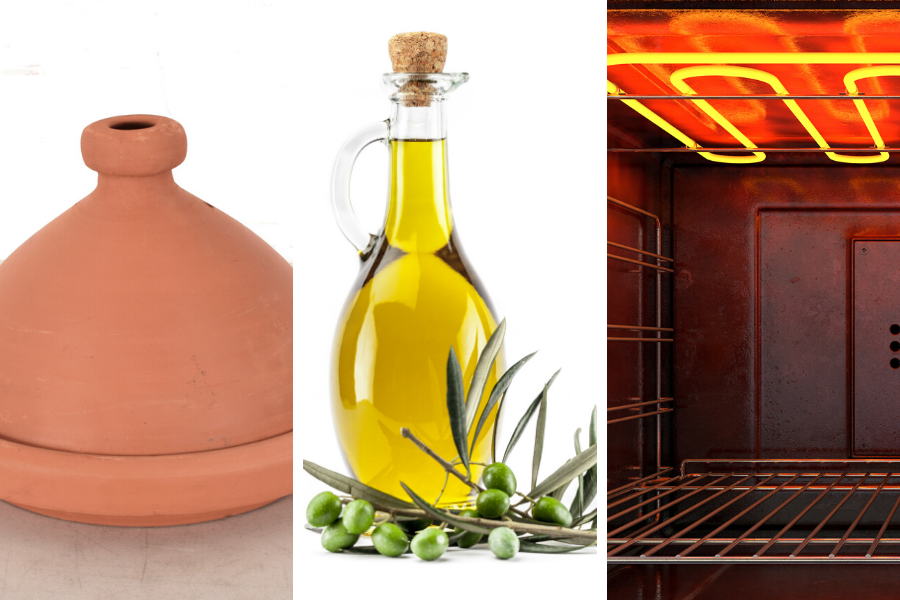
As you use your Tagine, you will start to see some darkening or staining of the clay. This is a desirable characteristic, giving your Tagine a beautiful, aged look. Once you’ve cured your Tagine, you can speed up this darkening process by adding fireplace ashes to olive oil and reapplying it to your Tagine, then leave the Tagine in a low oven for eight hours or longer.
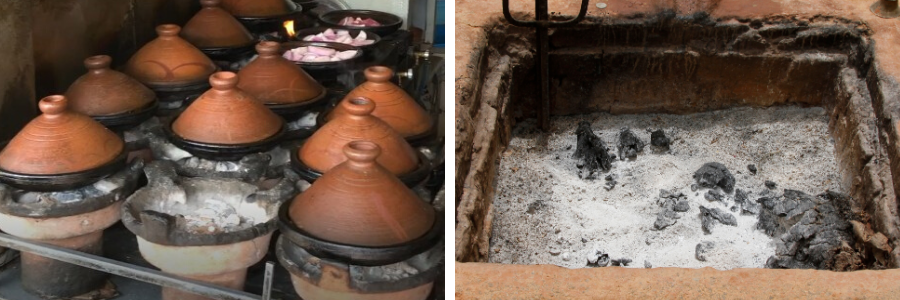
Always hand wash your Tagine with hot water and baking soda, or vinegar. You can use a very mild soap, but be sure to rinse thoroughly since unglazed clay can absorb a soapy taste. If your Tagine gets scorched or has food stuck to the bottom, never use anything abrasive on it, rather use a wooden spoon to dislodge as much food residue as possible, then soak the Tagine with hot water and baking soda. Once your Tagine has dried completely, lightly coat the interior of the lid and base with olive oil before storing. It's a good idea to store your tagine with the lid slightly ajar so that air can circulate.
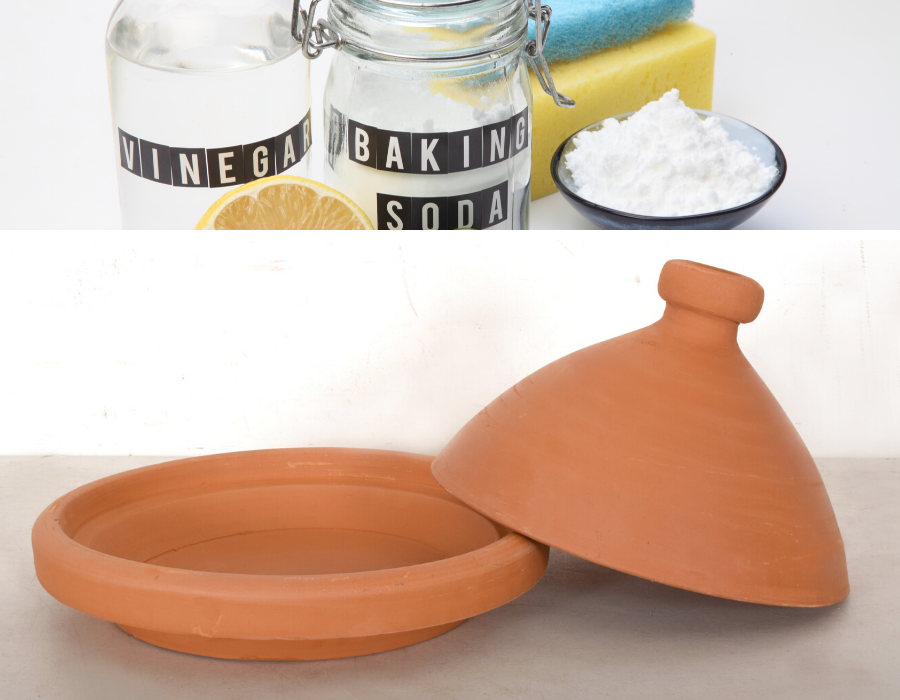
Traveling to foreign lands is not for everyone, but you can still experience the flavor of Morocco by learning to cook with Tagines. Already cooking with this beautiful stoneware? Show us your dishes on Instagram at @southeasternsalvage or on Twitter at @SESHomeEmporium

-All- -Get the Look- -Style- - How It's Made- -Lifestyle- -Holiday-
This website is designed to give customers a general idea of the type of products we sell.
Products, Styles, Colors, and Prices may vary by store. Prices subject to change without notice.
If you are looking for something specific, please confirm availability and price with the store.